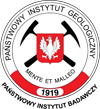Seismic refraction investigations are based on artificial excitation of seismic waves and measurements of the velocity of refracting wave propagation in the rock medium. The refraction wave is generated at the boundary of two rock media with different wave propagation velocity. Knowing the arrival times of waves, and the location of receivers and seismic wave generation points, we can create a velocity-depth model and accurately determine the depth and course of refractive boundaries, which often coincide with lithologic boundaries.
There are many methods for obtaining mathematical velocity-depth models: slope/intercept method, delay time method, reciprocal method, generalized reciprocal method – GRM. The choice between the methods depends on the geological conditions.
WE OFFER
Identification of:
- interfaces between differently weathered layers
- zones of faults, fissures and weakness
- landslide areas, especially spatial imaging of trend and depth to the sliding surface
- top of lithic, non-fractured bedrock, e.g. top of granites or limestones
- groundwater level
EQUIPMENT
- 24-channel ABEM terralock
- set of geophones: 10 Hz and 100 Hz, including cables
- PEG 40 kg portable seismic energy source
SOFTWARE
Reflex W from Sandmeyer for seismic data analysis
CONTACT
Szczecin
Małgorzata Schiewe, MSc
Pomeranian Regional Branch Unit
tel. +48 91 43 23 430
This email address is being protected from spambots. You need JavaScript enabled to view it.


